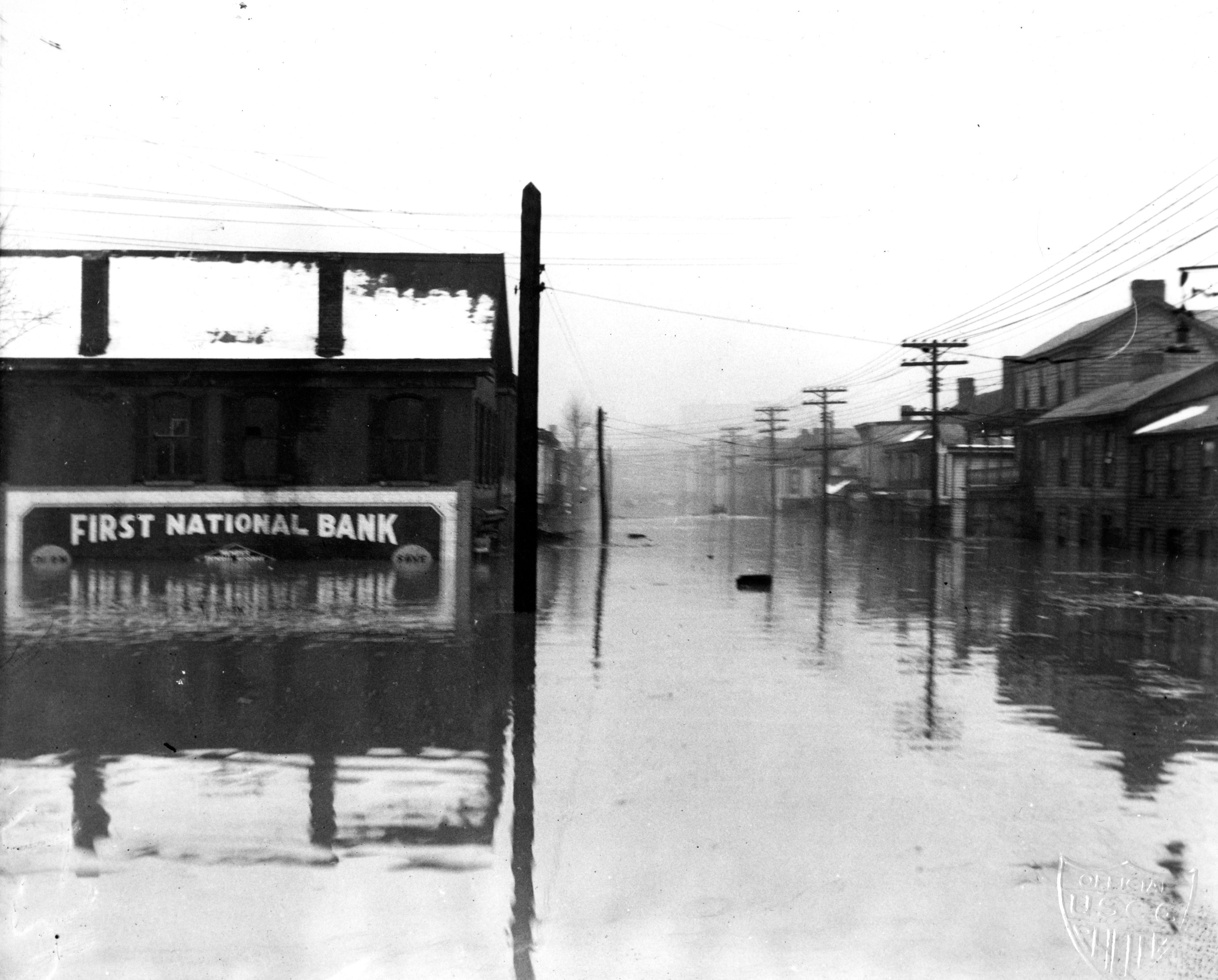 A period of heavy rainfall and melting snow in the spring of 2011 saw the Ohio and Mississippi rivers exceed record flood levels. The rivers’ waters rose so high that the U.S. Army Corps of Engineers had to demolish an earthen levee resulting in the controversial sacri
A period of heavy rainfall and melting snow in the spring of 2011 saw the Ohio and Mississippi rivers exceed record flood levels. The rivers’ waters rose so high that the U.S. Army Corps of Engineers had to demolish an earthen levee resulting in the controversial sacri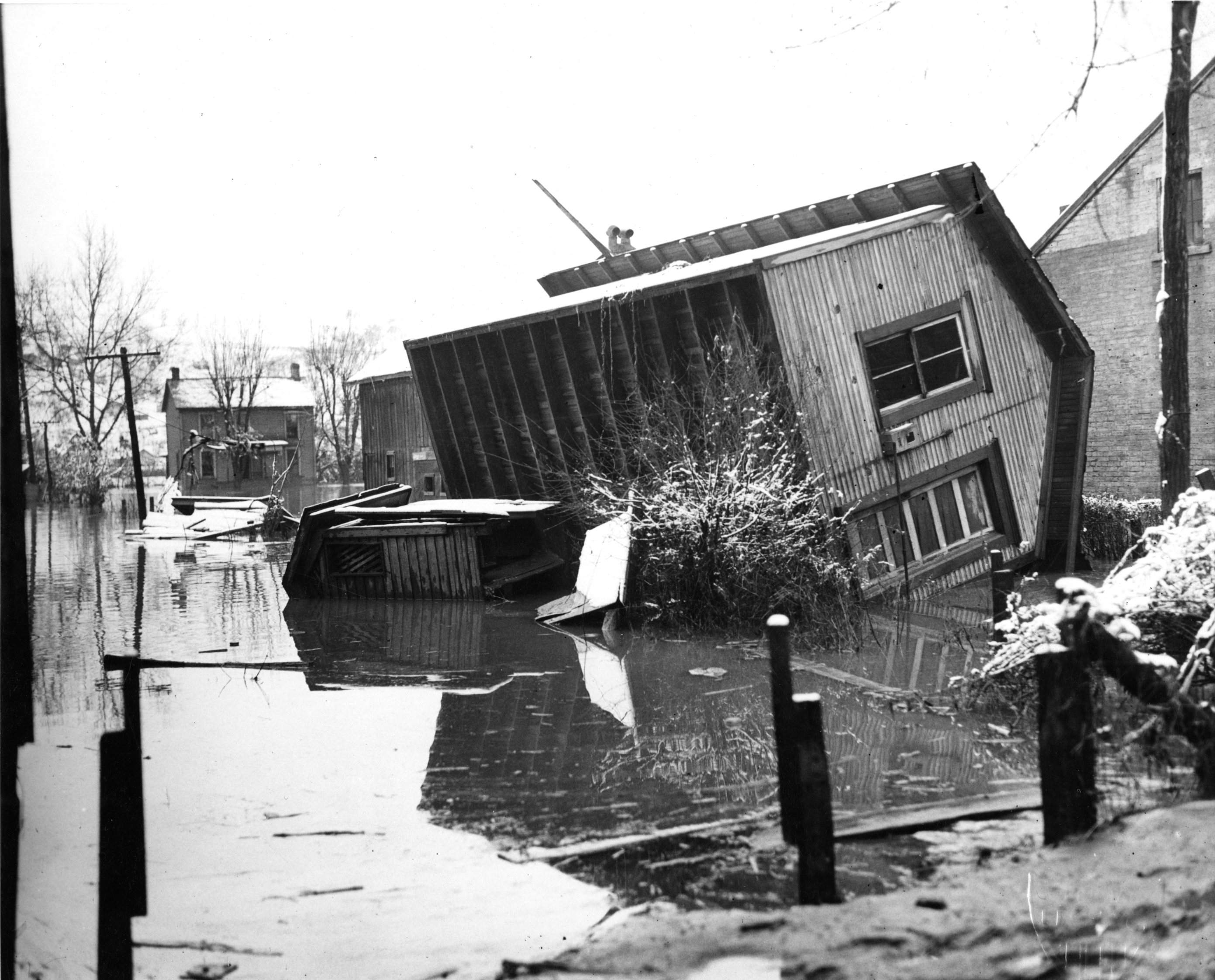 fice of Missouri farmland in order to spare the city of Cairo, Illinois, located at the confluence of the two great rivers.
fice of Missouri farmland in order to spare the city of Cairo, Illinois, located at the confluence of the two great rivers.
Before 2011, the record for flooding in the Western Rivers was set in the winter of 1937. In spite of preliminary steps taken to prevent flooding, torrential rains in January and February 1937 resulted in unprecedented crests of the Ohio and Mississippi rivers and inundation of riverfront communities from Cincinnati to New Orleans.
According to the United States Weather Bureau, the rainfall resulted from irregular weather patterns, which saw abnormal barometric pressures and warm, moist southern tropical air masses colliding with cooler northern polar air masses. The resulting precipitation from the collision of these fronts dropped an estimated 165 billion tons of water in the Ohio and Mississippi River Basin. This was enough to cover over 200,000 square miles of land to a depth of over 11 inches. In only 12 days, Louisville, Kentucky, received 15 inches of rain. Over 19 inches of rain fell over the course of the month of January. As a result, 70 percent of the city was submerged, forcing 175,000 residents to flee. Across the river, 90 percent of Jeffersonville, Indiana, was flooded. One contemporary source estimated that the flood caused $250 million ($5 billion in 2022 dollars) of damage to the area. The extent of the damage throughout the Ohio and Mississippi river valleys caused the American Red Cross to claim that the deluge shattered all previous records for natural disasters in the United States. 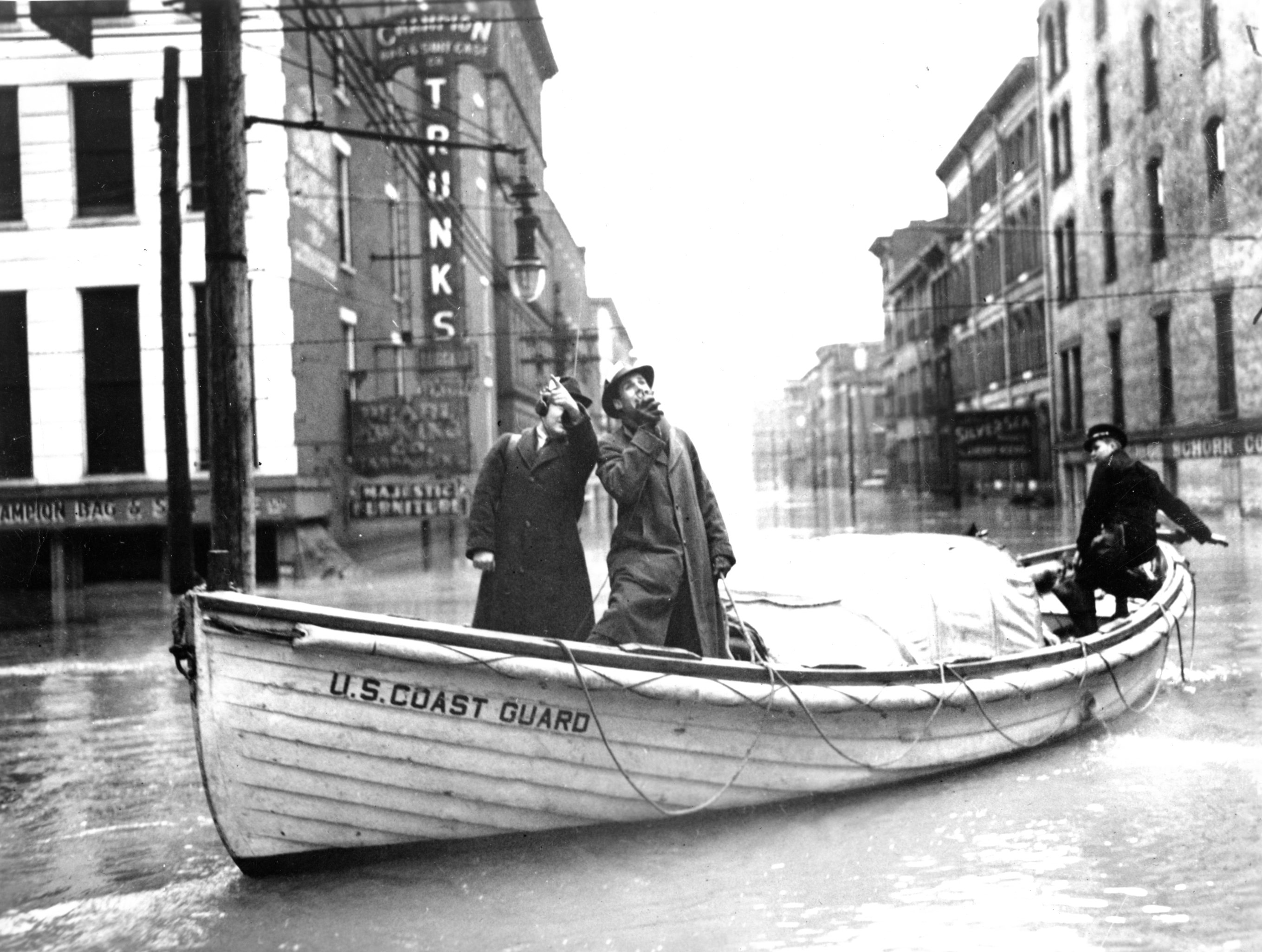
President Franklin Roosevelt and Secretary of the Treasury Henry Morgenthau directed the United States Coast Guard to mount the largest relief expedition in the history of the service. The Coast Guard mustered a relief force of 142 officers and 1,706 enlisted men to assist the Red Cross in 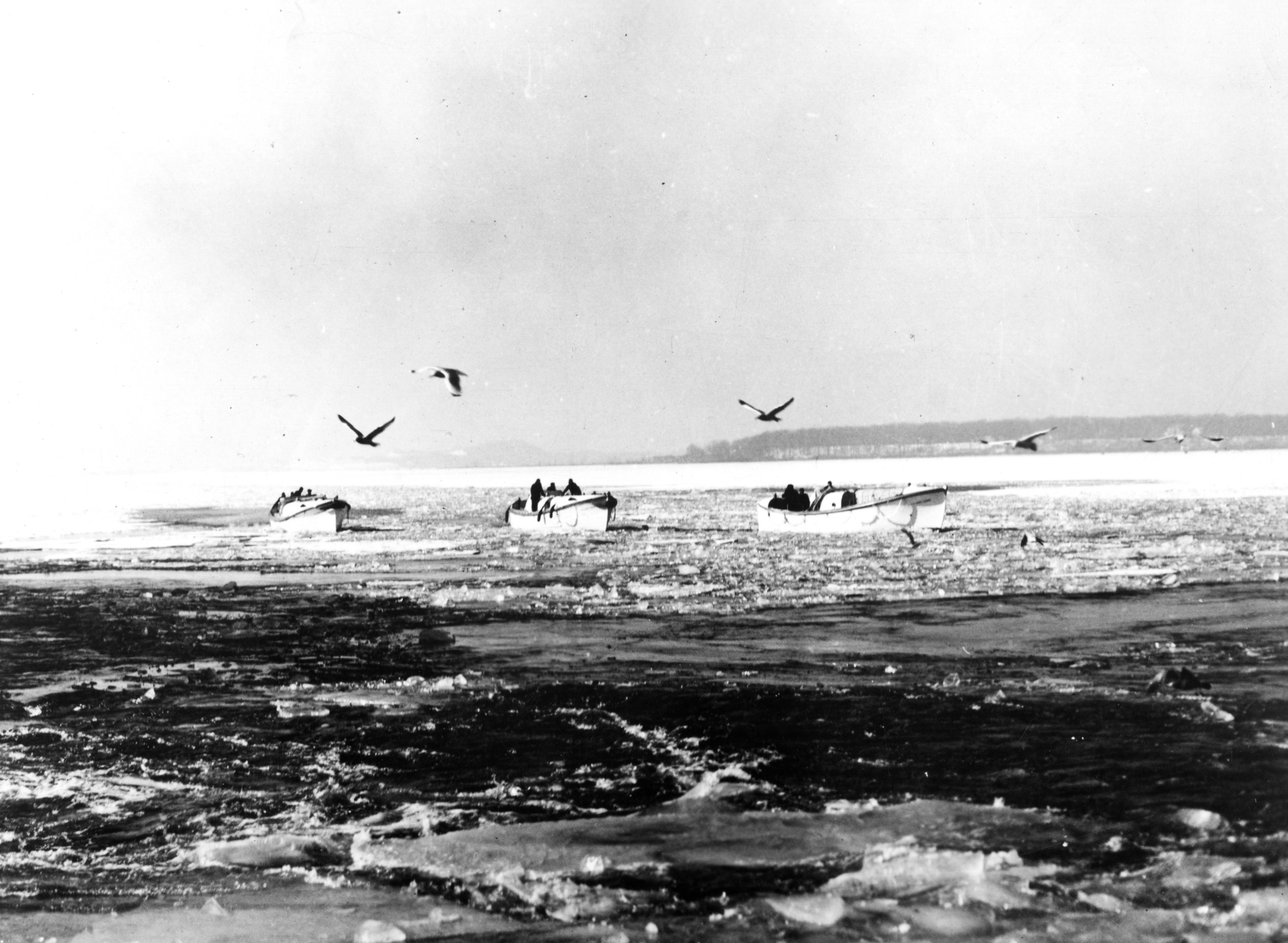 responding to these massive surges. Units from the Atlantic and Gulf coasts in addition to stations on the Great Lakes provided men and equipment. Capt. LeRoy Reinburg, Commandant of the Coast Guard Depot at Curtis Bay, Maryland, was placed in command of the Coast Guard’s effort. He initially established his headquarters at Evansville, Indiana. Later, he moved his headquarters to Memphis, Tennessee, as the crest advanced southward down the Mississippi to the Gulf of Mexico.
responding to these massive surges. Units from the Atlantic and Gulf coasts in addition to stations on the Great Lakes provided men and equipment. Capt. LeRoy Reinburg, Commandant of the Coast Guard Depot at Curtis Bay, Maryland, was placed in command of the Coast Guard’s effort. He initially established his headquarters at Evansville, Indiana. Later, he moved his headquarters to Memphis, Tennessee, as the crest advanced southward down the Mississippi to the Gulf of Mexico.
Rescue operations extended from Jan. 19 through March 11 and involved 351 boats of all types. In addition, 24 cutters, ranging from 75-foot “Six-Bitters” to 165-foot patrol boats, were sent to assist in saving life and property. The Coast Guard chartered special trains in order to transport of many of these craft from their stations to the focal points on the Ohio and Mississippi rivers. Along with boats and cutters, the Coast Guard employed additional assets to include 12 aircraft. Ten of these were amphibians, which could operate on land and the water. These aircraft were used in reconnaissance work and in delivering medicines and medical workers. The other two aircraft, Northrop and Lockheed transports, flew in large quantities of supplies from the Eastern Seaboard into the affected areas. The Coast Guard also deployed 12 portable radio sets and 12 communications trucks which served as mobile radio stations. These contributed to establishing an emergency radio network that included 244 stations.
In responding to the floods, t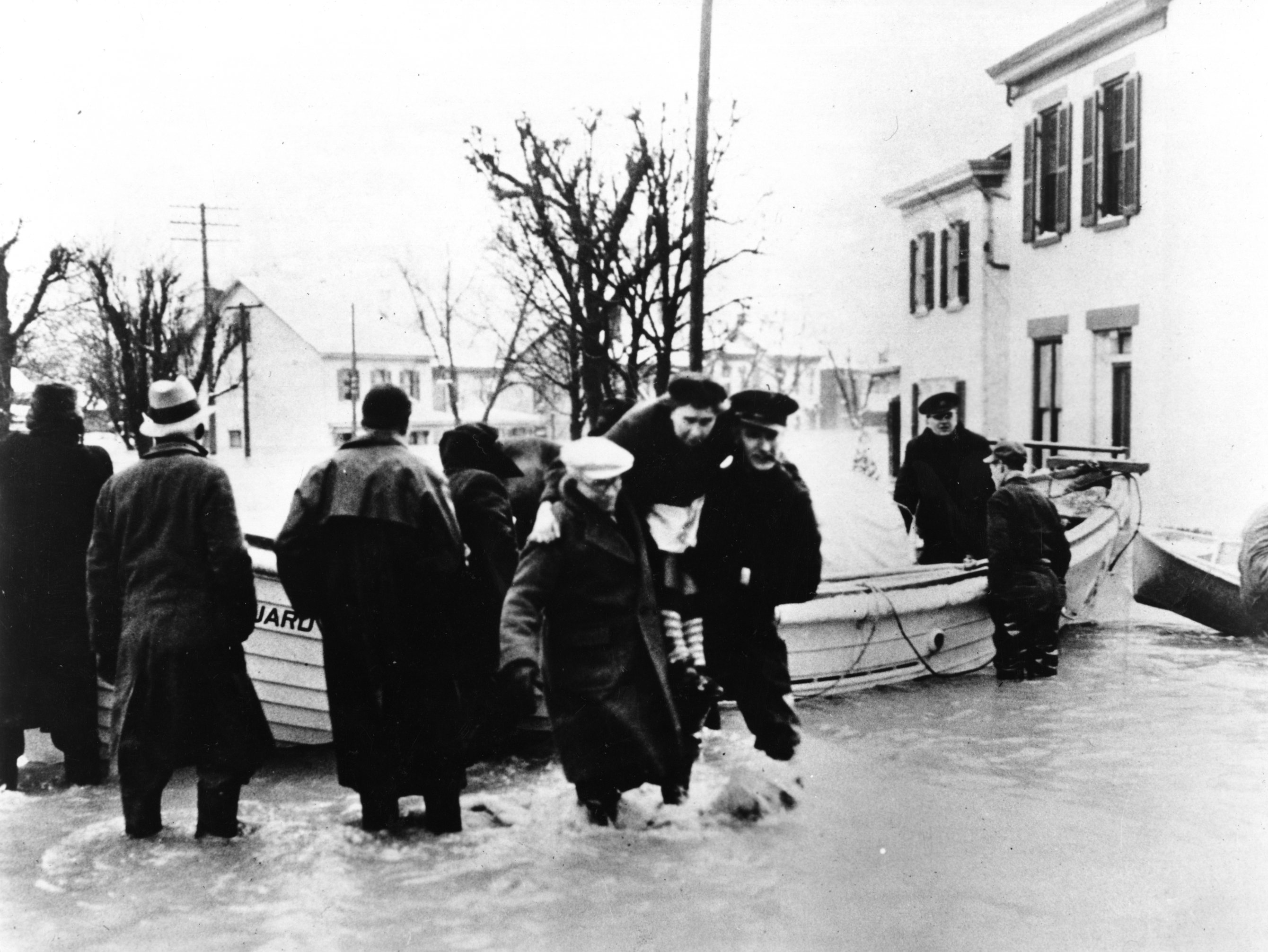 he Coast Guard faced some very interesting dilemmas. In Cincinnati, for example, thousands of ga
he Coast Guard faced some very interesting dilemmas. In Cincinnati, for example, thousands of ga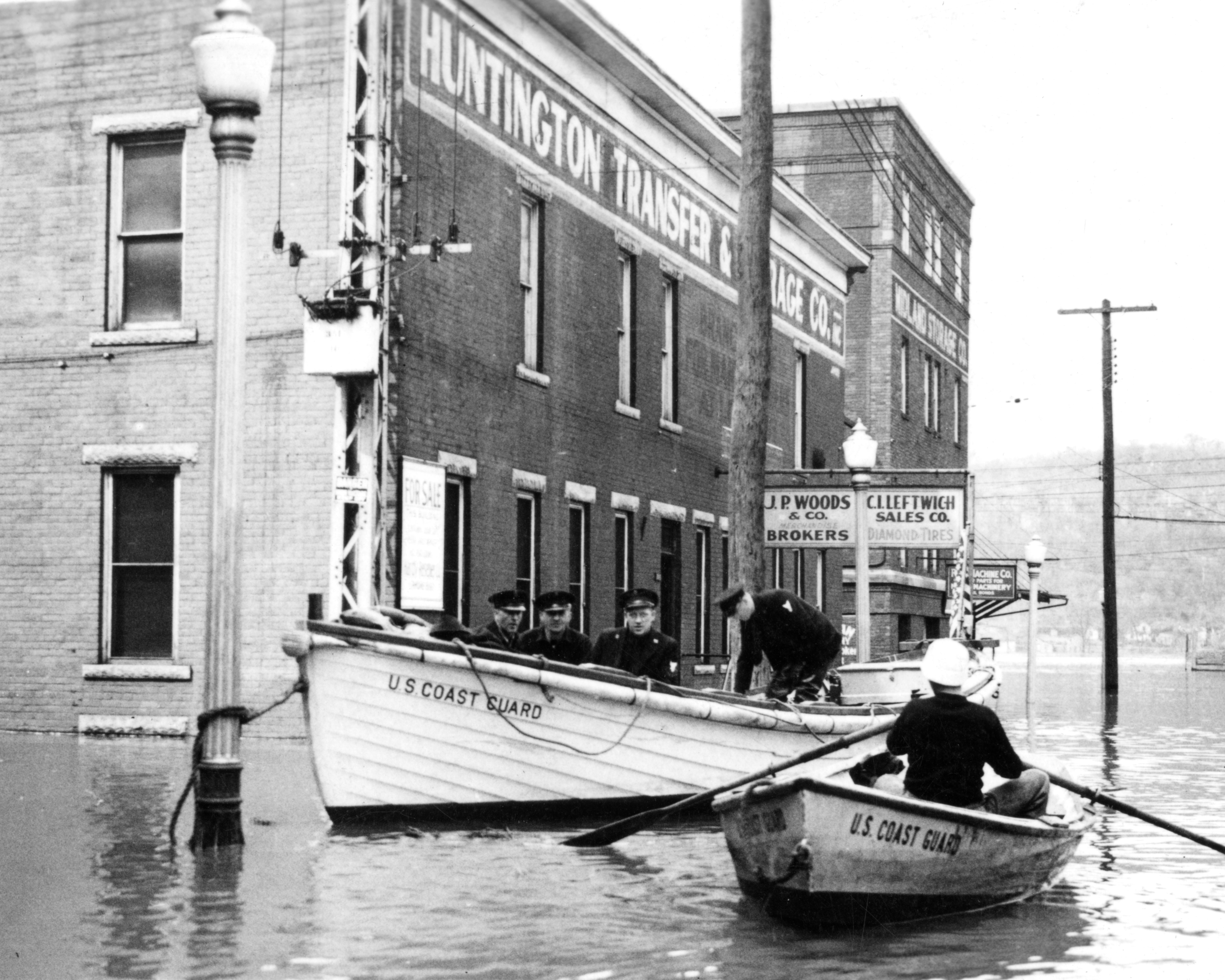 llons of gasoline spilled from storage tanks due to the floodwaters of the Ohio River. This fuel was ignited and, ironically, produced fires in buildings surrounded by water. In response, the Coast Guard boats pumped the floodwaters into the already inundated buildings to extinguish the flames and prevent the spread of fire.
llons of gasoline spilled from storage tanks due to the floodwaters of the Ohio River. This fuel was ignited and, ironically, produced fires in buildings surrounded by water. In response, the Coast Guard boats pumped the floodwaters into the already inundated buildings to extinguish the flames and prevent the spread of fire.
The winter temperatures were so cold that ice formed in the northern rivers, which would then float along the river. These small icebergs acted as hazards to navigation and sometimes capsizing rescue crafts.
Reports of discrimination by local authorities in the rescue of non-whites in distress had reached the headquarters of the National Association for the Advancement of Colored People (NAACP). This caused the organization’s assistant secretary, Roy Wilkins, to make an appeal to the Coast Guard Commandant, Rear Adm. Russell Waesche, to ensure the Coast Guard and local authorities rendered assistance to all those in need regardless of race. In response, Waesche gave his assurances that the Coast Guard was making no discrimination “in rescue and relief operations” and forwarded an instruction to Reinburg that “no discrimination is shown.”
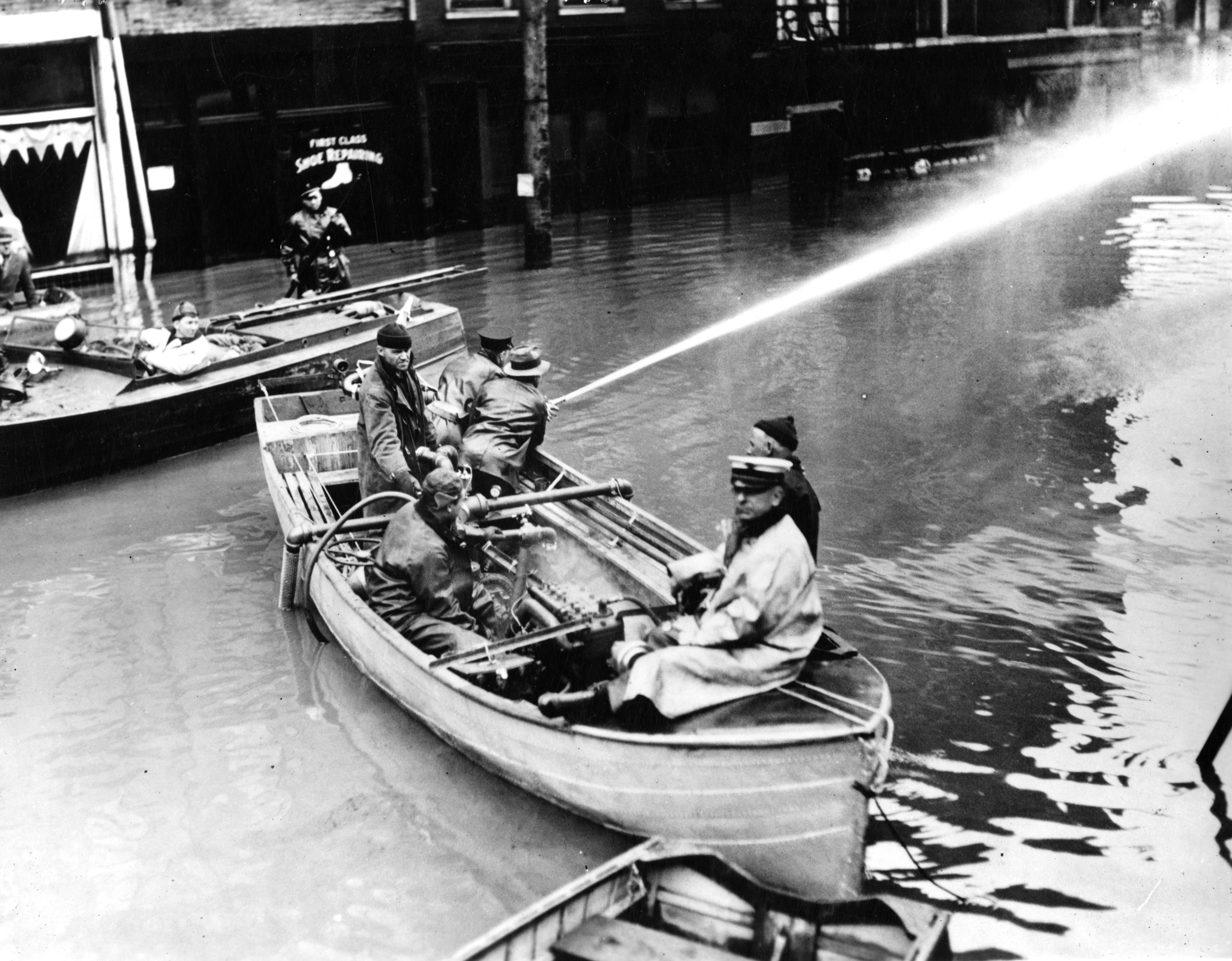 The Treasury Department’s Annual Report for Fiscal Year 1937 stated:
The Treasury Department’s Annual Report for Fiscal Year 1937 stated: 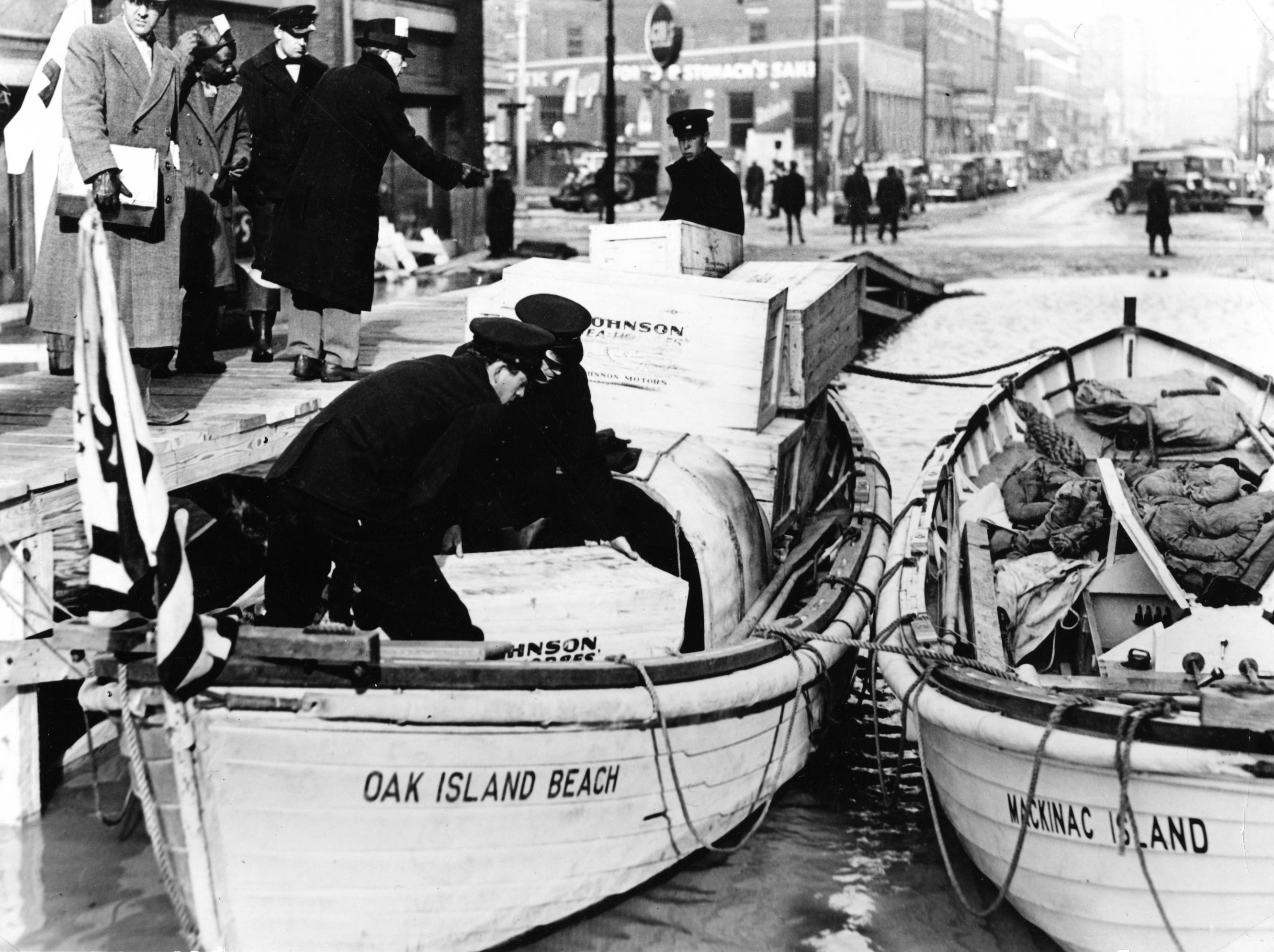
The relief force, besides rescuing 839 persons from peril, transported 67,613 refugees to safety, afforded transportation to thousands of Red Cross officials and relief workers, saved 1,993 head of livestock, carried mails, towed disabled boats and floating buildings to safety, helped to restore telephone and telegraph service, aided in preventing looting, and otherwise extended all aid within its power to be of assistance.
This 1937 relief operation marked a milestone in the Coast Guard’s tradition of response to natural disasters and served as precursor to the service’s humanitarian response to hurricanes Katrina and Rita in 2005.